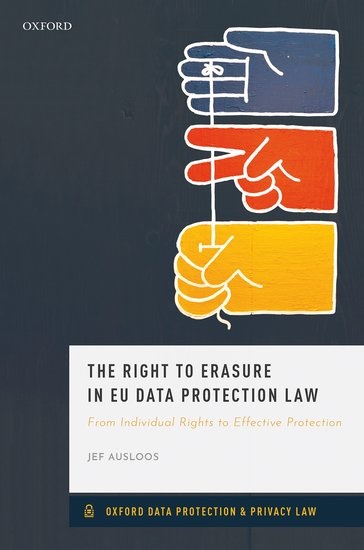The Right to Erasure in EU Data Protection Law
Jef AUSLOOS
Availability: Out of stock - available in 10 open days
- Categories: GDPR & Data Protection, April 2020
- Publisher: OXFORD UNIVERSITY PRESS ELT
- ISBN: 9780198847977
- Publication Date: 04/30/2020
- Binding: Paperback
- Number of pages: 560
Summary
This book critically investigates the role of data subject rights in
countering information and power asymmetries online. It aims at
dissecting 'data subject empowerment' in the information society through
the lens of the right to erasure ("right to be forgotten") in Article
17 of the General Data Protection Regulation (GDPR). In doing so, it
provides an extensive analysis of the interaction between the GDPR and
the fundamental right to data protection in Art.8 of the Charter of
Fundamental Rights of the EU (Charter), how data subject rights affect
fair balancing of fundamental rights, and what the practical challenges
are to effective data subject rights.
The book starts with
exploring the data-driven asymmetries that characterise individuals'
relationship with tech giants. These commercial entities increasingly
anticipate and govern how people interact with each other and the world
around them, affecting core values such as individual autonomy, dignity
and freedom. The book explores how data protection law, and data subject
rights in particular, enable resisting, breaking down or at the very
least critically engaging with these asymmetric relationships. It
concludes that despite substantial legal and practical hurdles, the
GDPR's right to erasure does play a meaningful role in furthering the
fundamental right to data protection (Art. 8 Charter) in the face of
power asymmetries online.
Table of contents
1: Introduction
Part I - The Right to Erasure in EU Data Protection Law
2: Foundations of Data Protection Law
3: Scope of the Right to Erasure
4: Conditions of the Right to Erasure
Part II - Balancing & Data Protection
5: Balancing in the GDPR
6: Balancing Scenarios
7: Open Questions on Balancing in the GDPR
Part III - Effectiveness
8: Making the Right to Erasure Work in Practice
9: Summary and Conclusion
